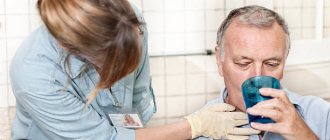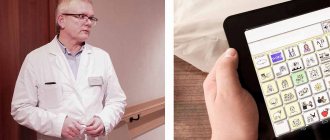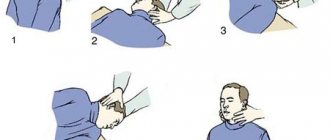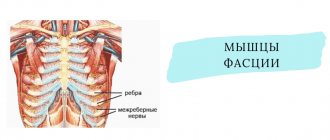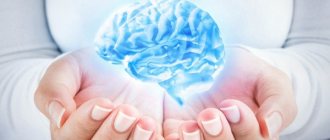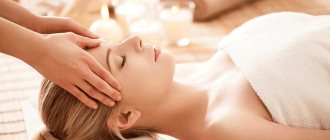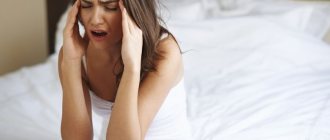Statistics show that out of every 100 thousand people living in Ukraine, 300 people have suffered a stroke. Every year this number only increases. This is facilitated by poor environment, poor nutrition, lack of exercise, bad habits and chronic stress. In addition, many people ignore preventive visits to the doctor until the last minute.
If a stroke has already occurred, there is no need to give up and hire a nurse. Medicine has advanced significantly in recent years, and there are effective methods of recovery. By following the recommendations of your doctor, you will help your loved ones return to normal activities faster.
Ideally, perform exercises after a stroke under the supervision of an experienced specialist. This service is offered by the private boarding house Life House.
A video will help you learn physical exercises after a stroke at home. Review them as many times as necessary, keeping track of all the details and nuances.
Position and styling
What exercises to do after a stroke depends on the characteristics of the disease in a particular case and the patient’s medical history. Life-House offers general recommendations.
Despite the fact that the patient spends the first time in bed, this is not a reason to waste time. It can be used usefully, because it is useful to do exercise therapy after a stroke while lying down. The main task is to relax the muscles in good shape and stimulate those that are relaxed.
Rehabilitation after a stroke at home requires some effort and knowledge. It is important to start with the patient's position. Place it so that the painful side is on the approach side. If he wants to take something from the nightstand next to the bed, he will need to turn on his sore side. This creates an additional stimulus for the muscles, which means they begin to work better.
To turn around, you need to grab the sick one with your healthy hand and lay it on your stomach. This way he can control it, and when turning, he will provide himself with support on his elbow.
Positional treatment is carried out using pillows. When placing them under the knee joint, ensure that the thigh is level and the foot does not fall outward. The leg needs to be supported - a chair or headboard will do.
Exercise therapy: gymnastics after a stroke
Breathing in a person who has suffered a stroke should be diaphragmatic and full of chest. The patient must learn to take a long breath and exhale. This helps to reduce the pulse, which is very important for hypertensive patients, as it reduces blood pressure.
Doctors recommend that a patient who has suffered a stroke not sit with their head down. This position reduces the supply of oxygen to the brain due to blockage of the arteries. In addition, deep breathing reduces the amount of cortisol in a stressful situation.
After a stroke, if it was complicated by pneumonia, the lungs weaken significantly. The patient should regularly perform breathing exercises.
The most effective exercises include:
- inflating rubber balloons;
- reading tongue twisters;
- blowing air into a glass of water through a plastic straw;
- the use of special devices to strengthen the lungs.
The following exercises will help restore proper breathing:
- Take a deep breath through your mouth, hold for 1-2 seconds, exhale slowly and smoothly. While exhaling, you can count to yourself to 15-20. In the future, you need to gradually increase the duration of exhalation. Number of repetitions – 3.
- Take a deep breath through your mouth, then pause for a second and exhale smoothly. The exhalation should be combined with the pronunciation of a drawn-out sound “mmm...”.
- Take a calm breath through your mouth, then pause for a second and exhale slowly, during which you pronounce the sound “nnn...” in a drawn-out manner.
- Take a deep breath, then pause and exhale smoothly. When exhaling, pronounce the sound “sss”.
You can practice pronouncing other sounds. It is important to control the intensity of exhalation when performing exercises. It should take at least 10 seconds for the air to sound smooth. Such gymnastics helps to avoid restoring speech after a stroke, so that the patient can speak measuredly and with pauses.
Strelnikova’s breathing exercises also worked well. It should be performed regularly every 2-3 hours. It includes well-known exercises: “Hug your shoulders”, “Forward step”, “Palms” and others. You need to take 10 inhalations and exhalations in a row, then rest for 10-15 seconds and again 10 inhalations and exhalations. The first days you need to do exercises using healthy limbs. Over time, you can begin to develop a sore arm or leg. When the patient’s health becomes better, it is advisable to continue performing gymnastics for the purpose of prevention. The minimum duration of classes is 30 days, the maximum is 1 year.
A special exercise has been developed for bedridden patients:
- lying on a flat surface, close the left side of the nose with your left hand, inhale through the right nostril;
- open the left nostril and close the right nostril;
- hold your breath, try to pause as long as possible;
- exhale gradually.
Repeat the exercise 5-10 times on each side of the nose. If your pulse increases and your heart rhythm becomes unclear, you should stop exercising. 7 days after regular exercises in the solar plexus area, the patient will begin to feel warmth. After a few months, he should notice an improvement in his health and strengthening of his abdominal muscles.
Passive arm development
Exercise therapy after a stroke at home should not be limited to purchasing an expander. Start with the larger muscles, moving from the shoulder joint to the finger joint.
Take the patient's hand so that his thumb remains in your palm and his hand rests relaxed on yours. To prevent your elbow from sagging, support it with your other. Lean on your leg in a lunge to transfer the weight of your body. Do 10-15 repetitions, softly and smoothly.
By mentally making up and down movements with your eyes closed, the patient can become involved in developing muscles. When doing exercise therapy after a stroke, the video will help you understand all the possible options.
Therapeutic gymnastics for the face
The following exercises will help strengthen the facial muscles and normalize the functioning of the speech apparatus:
- Show your tongue, try to stretch it forward as much as possible;
- Licking your lips in a circular motion;
- Gently bite your upper and lower lips alternately;
- Curl your lips into a tube;
- Clicking your tongue.
Pronounce simple rhymes or tongue twisters. If this process causes difficulties, then you need to start with individual sounds, continuing them with words consisting of two syllables.
Important! One of the main conditions for recovery is that the patient should hear human speech as much as possible!
Exercises while sitting
After a stroke, rehabilitation at home, exercises should be performed in different positions to vary the load. It is important to include the muscles of the sore side in the work. Their relaxation will lead to delayed rehabilitation and even injury. It is better if they are insured by a healthy person rather than by pillows and other devices.
When the patient is already sitting upright, specifically rock him. This way the body will get used to the load. We gradually complicate the task. Such gymnastics after a stroke will help a person move on to more complex exercises as soon as possible.
The mechanism of therapeutic action of physical exercises
True restoration of brain function is possible only in the first 6 months. after a stroke. It is ensured by the “disinhibition” of functionally inactive nerve cells, including in the “ischemic penumbra” zone, and is due to the disappearance of edema, improvement of neuronal metabolism and synapse activity. However, it has been shown that spontaneous true recovery is ineffective without additional targeted stimulation of repair and regeneration processes using methods that make up rehabilitation treatment. Another mechanism is compensation provided by the plasticity of brain tissue with the reorganization of the functioning of neuronal ensembles.
The organization of human motor functions appears to be a multi-level system with multi-channel connections, both direct and inverse, both vertical and horizontal. The development of each motor skill is preceded by the processing of afferent impulses entering the cortex and subcortical ganglia from the periphery. For the development of a motor program, not only impulses from proprioceptors embedded in muscles, synovial membranes, ligaments, joints are important, but also from other receptors emanating from the environment (sound, light, heat, cold), as well as from receptors in the skin and mucous membranes membranes (pain, feeling of pressure, weight, moisture, etc.). These impulses inform the overlying parts of the central nervous system about the need to change the movement, its amplitude, muscle strength, the inclusion of other muscle groups, or a change in the position of the limbs. Subcortical formations, in particular the hypothalamus in combination with the limbic-reticular system, provide the vegetative “coloring” of any motor act: changes in blood supply, the speed of vascular reactions, metabolism, the appearance of pain components, burning sensations, etc. Thus, in the regulation of motor activity they are complexly intertwined motor, sensory, cognitive and other functions. All this suggests that approaches to the recovery of movement disorders can be mediated through different systems. Therefore, various methods must be used to achieve an overall systemic effect.
Restoration of motor functions occurs most actively in the first 6 months. after a stroke, ahead of the restoration of deep sensitivity and goes through the same stages as the early psychomotor development of the infant. All this determines the primary focus of early rehabilitation on the motor sphere. In the process of ontogenesis of the functional movement system, stable proprioceptive-motor connections are formed in the body, the use of which is possible only taking into account the ontogenetic patterns of development of the functional movement system. The implementation of these mechanisms in patients with cerebral stroke can become the basis for creating a rehabilitation treatment program.
The functional system of movements is highly sensitive to the influence of such negative factors as physical inactivity, which leads to a decrease or disruption of functional connections and tolerance to physical activity, or as an attempt to learn movements of a higher order, as a result of which “non-physiological”, “non-functional” connections are formed and impaired the impact of muscle tension on the joints of the limbs and torso, i.e., pathological postures and movements are formed. In this regard, when carrying out rehabilitation measures in patients with cerebral stroke, a constant, daily assessment of the state of the motor component and functional state is necessary.
The basic principles of restorative treatment of post-stroke movement disorders are early onset, adequacy, phasing, duration, complexity, continuity and maximum active participation of the patient. To successfully carry out this treatment, it is necessary to correctly assess the state of the impaired function in each patient, determine the possibility of its independent restoration, the degree, nature and duration of the defect, and on the basis of this, the choice of adequate ways to eliminate the disorder.
You should be guided by the following rules [6, p.94]:
- individual focus of impact;
- strict dosage of exposure;
- validity of the choice of forms and methods of influence;
- purposefulness, systematicity and regularity of application of the selected impact;
- gradual increase in intensity of exposure based on effective control;
- continuity in the use of selected forms and methods of physical activity at different stages of rehabilitation treatment.
Contraindications to the administration of exercise therapy to patients in the acute period of cerebral stroke are: hyperthermia; ischemic changes on the ECG; circulatory failure, significant aortic stenosis; acute systemic disease; uncontrolled ventricular or atrial arrhythmia, sinus tachycardia above 120 beats/min; third degree atrioventricular block; thromboembolic syndrome; acute thrombophlebitis; uncompensated diabetes mellitus; defects of the musculoskeletal system that make it difficult to exercise.
The use of exercise therapy in patients with cerebral stroke includes active and passive forms.
Active ones include:
- therapeutic exercises - breathing, restorative, special, reflex, analytical, corrective, psychomuscular, hydrokinesitherapy;
- occupational therapy (ergotherapy) - correction of the patient’s activity and participation in everyday habitual activities, active interaction with environmental factors;
- mechanotherapy - simple devices, block, pendulum, with electric drive, with mechanical drive;
- treatment with walking (terrentherapy) - dosed walking, health path, obstacle walking, dosed walks;
- specialized methodological systems - Clapp, Cabot, Botat, Brunstrom, balance, yoga, suspension therapy, bullet therapy, etc.;
- biofeedback - use of EMG, EEG, stabilography, spirography, dynamometry, cinematography data;
- high-tech computer technologies - virtual reality computer systems, biorobotics;
- other methodological techniques - “non-use” of the intact side, the effect of “crooked” mirrors, etc.
Passive exercise therapy includes the following forms:
- massage - therapeutic, classical, reflex, segmental, mechanical, vibration, pneumomassage, hydromassage;
- robotic mechanotherapy (terrenotherapy) extension therapy;
- manual manipulations - vertebrotherapy, joint manipulations;
- positional treatment (postural therapy) - the use of bolsters, pillows and devices;
- passive movements carried out by an instructor and a doctor;
- high-tech computer technologies - virtual reality computer systems, biorobotics.
Therapeutic gymnastics for patients with cerebral stroke includes the use of various positions, movements and exercises for therapeutic purposes, both by the patient independently and with the help of specialists and additional devices.
Walking with a cane
Buy a good, comfortable cane that fits your height with a comfortable handle.
Rehabilitation after a stroke physical therapy includes training in walking patterns. First, the stick is rearranged, after which a step is taken with the injured leg. And only then does the healthy one walk. Make sure there are always two points of support.
The affected leg usually turns outward. To correct this, ask the patient to place emphasis on the knee, bending it slightly. Healthy people do this without even thinking. When rehabilitating after a stroke at home, exercises involve learning this process almost from scratch.
The benefits and effects of charging at home
The main task that therapeutic exercises cope with is the complete restoration of the body’s functioning .
In addition, it performs many secondary functions:
- If a patient experiences paralysis after a stroke, this indicates muscle tone . You can remove it with the help of special exercises;
- Restoring coordination of movements;
- Blood supply to tissues increases , as a result of which metabolic processes are activated, the condition returns to normal faster;
- Preventing bedsores. Prolonged stay in the same position disrupts blood microcirculation. Gymnastics helps prevent the formation of bedsores.
Important! Exercise therapy is the main component of rehabilitation after a stroke.
Learning to walk up the stairs
During exercise therapy after a stroke, the set of exercises ends with the patient attempting to walk, climb and descend stairs independently. Learning this is dangerous, but necessary.
The patient needs to stand near the stairs as close as possible. If the railing is on the side of the affected arm, give him a stick. Having placed it on the step, you need to move the healthy leg and pull the sore leg towards it. The sore leg goes down first; to do this you need to sit down on the strong, healthy leg.
Obviously, although it is possible to recover without additional help, it will require a huge investment of time and effort. Errors affect the speed and quality of rehabilitation. Proper exercise after a stroke is the key to a speedy recovery. Therefore, it is better to shift this task onto the shoulders of professionals - people with specialized education and extensive experience. Life House specialists will tell you which exercises after a stroke are most effective and injury-free. They will help your loved one get back on their feet and enjoy life to the fullest!


